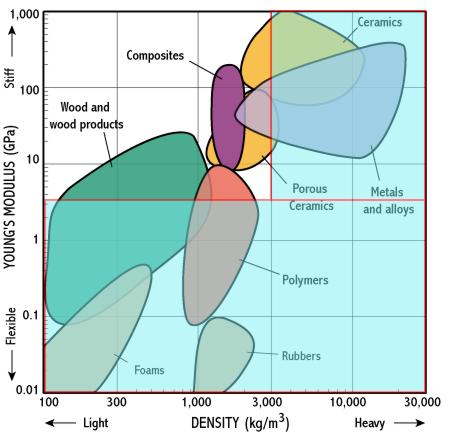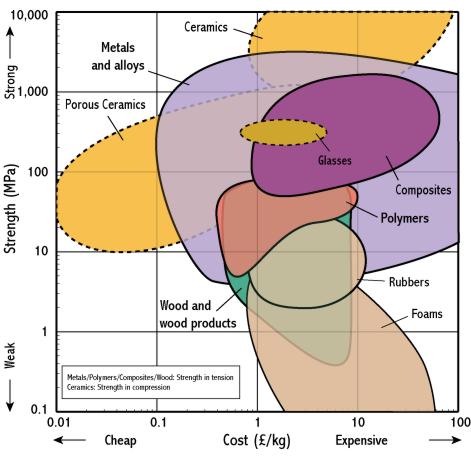What can we conclude?
- The values of Young's modulus for polymers are low, so
most polymers are unlikely to be useful for
stiffness-limited designs.
- Some metals, ceramics and woods could be considered - but composites appear best of all.
This still leaves quite a lot of choices, so what might be considered next to narrow the choice further?


